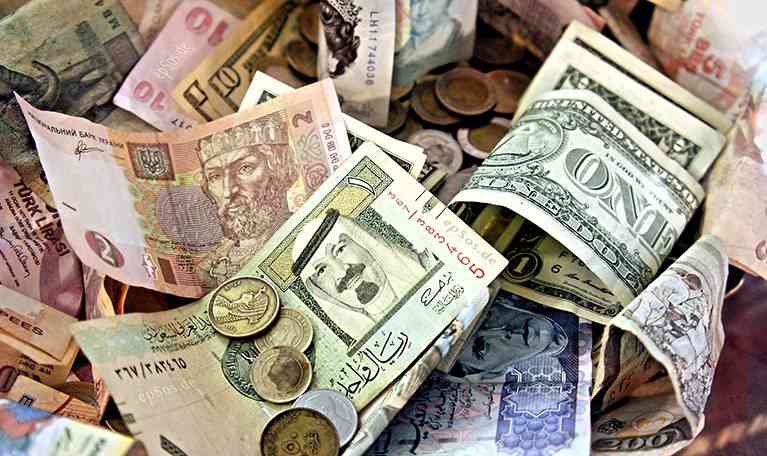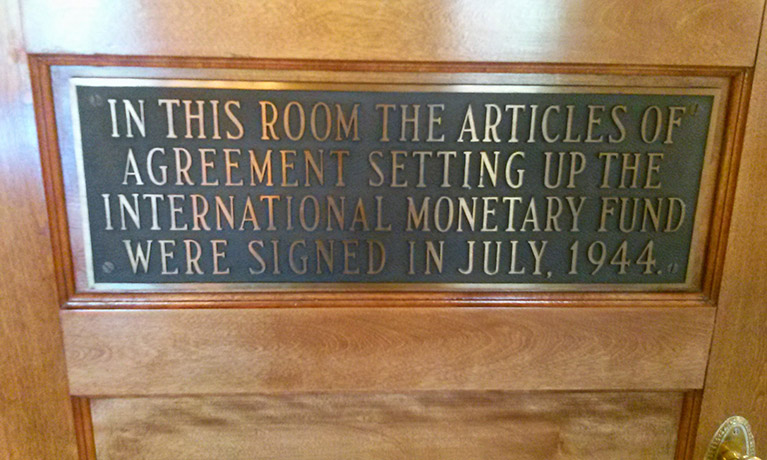The principle that lies behind the idea of the Forex market started with when metals such as gold and silver started being minted into coins. People would use the value of these metals in coin form to pay for things. When this time in monetary history started is when we can say that the Foreign Exchange Market, too, started.

Wherever gold was accepted as an international currency, key marketplaces would be established at strategic points around the world. These points of trade would house massive ports that supported large cargo ships carrying all sorts of valuable goods and commodities. They would then trade these items for the gold or silver coins.
Over time, countries started bringing their own currencies with the option to convert those currencies back to gold. Though there were some who exchanged paper money for gold, back in those times it was a rarity. This lack of gold conversion caused an abundant supply of paper money, which ultimately led to crazy inflation, which led to political instability.
Something had to be done. Something revolutionary, such as the Forex Currency Exchange.
The Bretton Woods Agreement of 1944

It wouldn’t be until 1944 that a globalised solution would be formed. World War II was approaching what seemed to be an end. It the war’s wake, the world was thrown into all sorts of chaos and economic instability. Major global economies of the time decided it would be best to give value to all global currencies through the value of gold. Gold was then valued in terms of the United States Dollar. This was called the Bretton Woods Agreement.
People thought the Bretton Woods system would be the end-all solution to the problem, but it only ended up causing bigger problems. A global demand for the dollar abruptly grew, but the world’s gold supply just couldn’t keep up with the global demand for the United States Dollar. Increased demand for the USD was necessary to maintain liquidity for world economic growth and trade, but with gold shortages, the USD didn’t have the support it needed.
Now what had been meant to be a solution became a huge problem for the global economy. The Bretton Woods Agreement was a failure.
The Beginning of the Floating Exchange Rates
The United States Dollar was no longer able to hold the pegged rate to gold at $35 an ounce. It was in 1971 that President Nixon put an end to the Bretton Woods Agreement. This transformed the Foreign Exchange into a free-floating currency system. There were some who wanted to bring different forms of the Bretton Woods Agreement back, but they were all shot down.
The market was now able to decide the value of each currency through supply and demand thanks to the floating exchange rates. Who decides this? Essentially it is the “stay at home forex trader” who affects the value of global currencies through his or her trading activities.
One individual’s action can barely be felt – if at all. But the entire bulk of Forex traders as a collective, buying and selling currencies, determine a free-floating currency’s value at any given time. This allows savvy traders to “capitalise” on the fluctuating rates by entering a Forex trade a just the right moment. It is kind of reminiscent of a surfer waiting to catch that perfect wave. The flip side is, if traders jump in too soon or too late, they can lose – sometimes, losing big.
The Electronic Communications Network Changed the Game
There was a time when the free-floating currency market was primarily traded by large commercial companies, hedge funds and banks. This usually meant that people with money only had an opportunity to trade Forex. Thanks to technological advances, the expansion of the internet and the Electronic Communications Network (ECN), “electronic trading” began slowly opening the doors for average people to join the market.
The ECN created a decentralised environment, allowing people to conduct trades outside of an exchange. This opened the floodgates as investors all over the globe were able to trade no matter their location or time zone.
Forex Market Participants
- Investors
- Money exchanges
- Hedge funds
- Commercial and Investment banks
- Traders
- Speculators
- Forex brokers
- Insurance companies.
Common Currency Pairs Traded
- EUR/USD (Euro to US Dollar)
- GBP/USD (British Pound to US Dollar)
- USD/CHF (US Dollar to Swiss Franc)
- USD/JPY (US Dollar to Japanese Yen)
- USD/CAD (US Dollar to Canadian Dollar)
- AUD/USD (Australian Dollar to US Dollar)
The ECN also made it possible for brokers to appear as market makers. They placed themselves as the gateway to Forex trading, setting their own Bid and Ask prices along the way – this is how they make a profit. Brokers will act on the behalf of their clients, placing trades on the ECN network at an increased price than what they actually bought the currency for – now they are profiting from each trade order placed with them.
This gave birth to the retail Forex traders you see today – people like you and me. All we have to do is sign up with a broker on some Forex site and now we too are connected to the ECN network. We download some charting software, download some app on our smartphones and start placing trades within minutes.
Learn Forex Trading Basics
To trade effectively, you need forex education. It will help you manage your risks and make profits on your trade.
If you are a beginner, learning forex trading becomes easier when you refer to books and websites to learn about forex trading. Forex signals and forex charts are essential tools in forex trading for beginners.
The Forex or currency market is a global market where global currencies are traded. The foreign currency exchange works 24 hours a day and 5 days a week. Individuals, institutions, and corporates participate in the forex currency exchange. Do the research and go through forex trading for beginners guides to learn forex trading.
Forex Market Characteristics
- Low transaction cost
- High liquidity
- Easy accessibility
- Leveraging
If you are learning forex trading, you may be overwhelmed by the number of currency pairs traded. Analyze the different currency pairs and determine the best forex pair that suits your trade.
Learning forex trading becomes easy once you understand the currencies that you buy and sell. Learn to read the forex chart patterns.
Forex Trading for Beginners
- Forex trading is done in pairs. Trade is between the currencies of two countries.
- Bear Market depicts a negative trend in the market. The price value of the currency moves lower, and investors can short sell their positions.
- Bull Market depicts a positive trend in the market. The price value of the currency moves higher, and investors can buy or go long on currency pairs.
- When you buy a currency pair, it is called “going long”. You purchase the first currency and sell the second.
- When you “go short”, the first currency is sold, and the second currency is bought.
- Leverage is the ability for a trader to make a small investment but have control over a large amount of money.
- Stop loss, Purchase order, and Sell orders are a few basic terminologies that beginners should learn and apply in their trade.
Trading on the Forex Currency Exchange
- You can learn by opening a demo account in the forex currency exchange.
- Trade small. Understand your trade before increasing your trading capital and remain updated on forex news.
- Learn to close your trade and apply stop loss. It will prevent you from losing your investments.
- Refer to forex trading guides to help you learn forex trading using forex pips.
- You can refer to free forex signals that are available by downloading the apps from eToro or Zulu Trade. Exercise diligence when you use the app.
- Remain updated on forex news.
Types of Analysis
Forex trading for beginners begins with analyzing the forex market.
- Fundamental Analysis
The fundamental analysis involves a few key elements. Traders can get forex news from websites such as Daily Forex to get the latest economic developments in a country.
- Interest rates
- GDP growth
- Employment News
- Inflation rate
- Economic news and events
B.Technical Analysis
Technical analysis helps to predict the future market movement. Traders make a profit from very small movements in the currency prices, also known as forex pips. The tools used in technical analysis helps in forex trading for beginners.
While learning forex trading, beginners should learn to utilize free forex signals and forexnews on the forex currency exchange. The Daily Forex website provides useful information that helps in forex trading for beginners.
- Forex Charts
- Technical indicators
C.Sentimental Analysis
Traders have their own thoughts on the forex market movement. They observe the net number of long or short trades by analyzing client sentiment. It is an individual analysis. If the trader reads the market sentiment correctly, he will reap profits. Else, he has to face a loss.
We offer a range of forex trading guides to supplement your knowledge in forex strategies and trading ideas. Refer to forex charts and learn to analyze them.
So, you see? We have come a long way. Technology is only making it easier as time goes by. It is not hard at all to join the Forex trading community, oftentimes only costing as little as $100 to start Forex trading.
Incorporate trading ideas and strategies in your trade and profit from them. The forex market is filled with great opportunities.